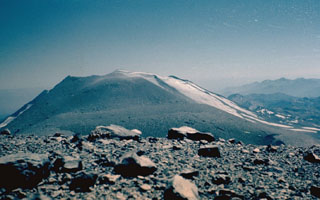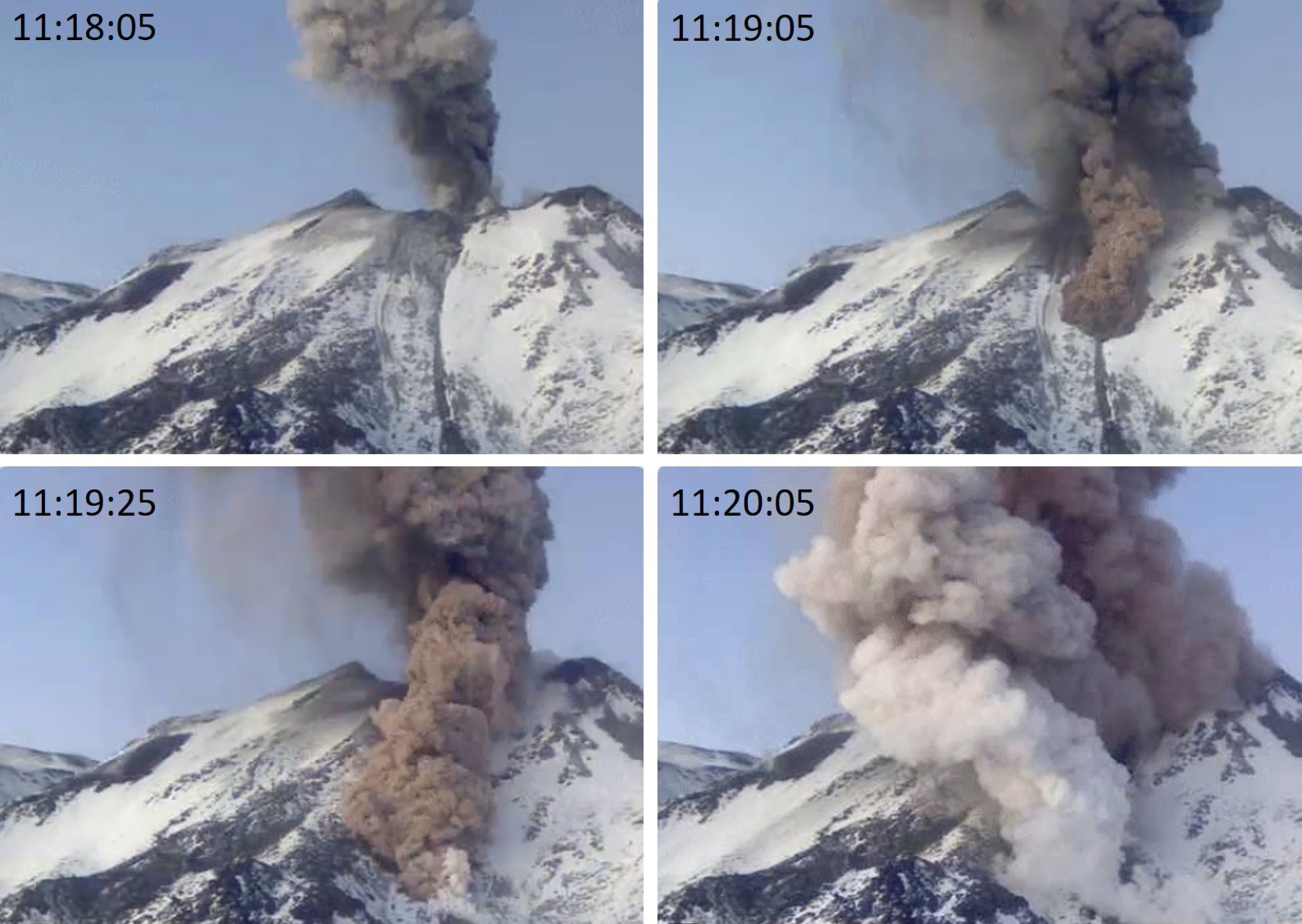Report on Nevados de Chillan (Chile) — June 2019
Bulletin of the Global Volcanism Network, vol. 44, no. 6 (June 2019)
Managing Editor: Edward Venzke.
Edited by Janine B. Krippner.
Nevados de Chillan (Chile) Small ash explosions and dome growth during December 2018-May 2019; ballistic ejecta deposited around the crater, with a pyroclastic flow in May
Please cite this report as:
Global Volcanism Program, 2019. Report on Nevados de Chillan (Chile) (Krippner, J.B., and Venzke, E., eds.). Bulletin of the Global Volcanism Network, 44:6. Smithsonian Institution. https://doi.org/10.5479/si.GVP.BGVN201906-357070
Nevados de Chillan
Chile
36.868°S, 71.378°W; summit elev. 3180 m
All times are local (unless otherwise noted)
The current Nevados de Chillán eruption period began on 8 January 2018 with a phreatic explosion from the new Nicanor crater, within the Nuevo crater; a new dome was observed within this crater the next day. Dome growth continues with explosions that eject ash plumes and incandescent ejecta. This bulletin summarizes activity from December 2018 through May 2019 and is based on reports by Chile's Servicio Nacional de Geología y Minería (SERNAGEOMIN)-Observatorio Volcanológico de Los Andes del Sur (OVDAS) and satellite imagery.
Throughout December 2018 pulsating emissions from the Nicanor crater produced white plumes predominantly composed of water vapor, with occasional ash ejections giving the plume a gray appearance. Incandescence was frequently observed during the night due to the ejection of hot ballistic ejecta emplaced around the crater during explosions. After 11 months of observations, the dacite dome in the crater maintained a semi-stable extrusion rate of around 345 m3/day. Explosions were reported on 7, 17, 28, and 29 December.
Similar background activity continued through January with pulsating gas-and-steam plumes occasionally including ash, and incandescence observed during the nights due to hot ejecta around the crater. Explosions were recorded at 0500 and 1545 on 11 January, and on 13, 21, and 31 January (figures 33 and 34). During the night explosions and incandescent ejecta were observed impacting the area around the crater.
 |
Figure 34. An explosion at Nevados de Chillán on 31 January 2019 produced an ash plume from the Nicanor crater. Courtesy of SERNAGEOMIN. |
Activity continued through February similar to previous months. The dome in the crater maintained a low extrusion, and activity alternated between dome growth and partial destruction during explosions. Steam-and-gas plumes with occasional ash content continued, with plumes reaching 1 km and drifting in multiple directions. Incandescence was observed during the night. Explosions were reported on 15 February.
During March through May, typical activity consisting of pulsating emission of steam plumes with occasional ash content, and incandescence at night, continued. Intermittent explosions associated with the partial destruction of the dome continued, with events reported on 1 March at 2323, and on 4, 7, and 8 March. Several explosions were reported during 8-9 and 23-30 April. Three explosions were reported on 3 May with one of them producing a 2-km-high ash plume and a pyroclastic flow on 10 May (figure 35). Additional explosions occurred on the 12 and 18 May.
Satellite data from December 2018 through May 2019 recorded intermittent thermal energy, with an increase after February 2019 (figure 36). Thermal anomalies from MODIS instruments were detected by the MODVOLC system on 29 March and 17 May 2019 (two anomalies). A thermal anomaly in the Nicanor crater was persistent in Sentinel-2 data throughout this period.
Geological Summary. The compound volcano of Nevados de Chillán is one of the most active of the Central Andes. Three late-Pleistocene to Holocene stratovolcanoes were constructed along a NNW-SSE line within three nested Pleistocene calderas, which produced ignimbrite sheets extending more than 100 km into the Central Depression of Chile. The dominantly andesitic Cerro Blanco (Volcán Nevado) stratovolcano is located at the NW end of the massif. Volcán Viejo (Volcán Chillán), which was the main active vent during the 17th-19th centuries, occupies the SE end. The Volcán Nuevo lava-dome complex formed during 1906-1945 on the NW flank of Viejo. The Volcán Arrau dome complex was then constructed on the SE side of Volcán Nuevo between 1973 and 1986, and eventually exceeded its height. Smaller domes or cones are present in the 5-km valley between the two major edifices.
Information Contacts: Servicio Nacional de Geología y Minería (SERNAGEOMIN), Observatorio Volcanológico de Los Andes del Sur (OVDAS), Avda Sta María No. 0104, Santiago, Chile (URL: http://www.sernageomin.cl/); MIROVA (Middle InfraRed Observation of Volcanic Activity), a collaborative project between the Universities of Turin and Florence (Italy) supported by the Centre for Volcanic Risk of the Italian Civil Protection Department (URL: http://www.mirovaweb.it/); Hawai'i Institute of Geophysics and Planetology (HIGP) - MODVOLC Thermal Alerts System, School of Ocean and Earth Science and Technology (SOEST), Univ. of Hawai'i, 2525 Correa Road, Honolulu, HI 96822, USA (URL: http://modis.higp.hawaii.edu/); Sentinel Hub Playground (URL: https://www.sentinel-hub.com/explore/sentinel-playground).




